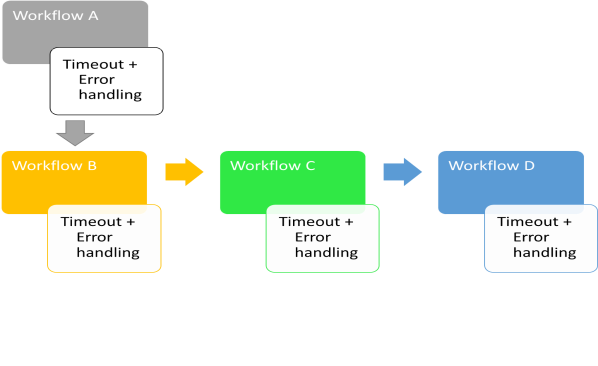You MUST ensure that the workflow ends when the interaction ends:
The simplest way to end a workflow is to call End on all workflows as part of a reset mechanism.
For unattended solutions, always define a timeout for the main workflow and/or the sub-workflows (specified in seconds). Defining timeouts (and error handling) for each of the sub-workflows provides for more granular error handling and control.

Prepare common timeout handling. When a timeout occurs, make sure to close the main workflow and sub-workflows after performing any necessary error handling.
If a workflow does not terminate, it will not start the next time it is invoked. When you try to start a workflow that is already running, nothing happens, other than a record in the log notifying of an error.
For robotic automation workflows, it is recommended to set a timeout (that includes invoking the End workflow function), ensuring that the workflow terminates no matter what kind of unexpected error happens during execution. This ensures that in the event of either a logical or technical failure occurs, the workflow ends.
For robotic automation workflows, it is recommended to set a timeout (that includes invoking the End workflow function), ensuring that the workflow terminates no matter what kind of unexpected error happens during execution. This ensures that in the event of either a logical or technical failure occurs, the workflow ends.
At the end of a robotic automation workflow, as well as during any workflow error handling, reset all the objects necessary to re-run the workflow, including the sub-workflows, business entities, and so on.
Do not put a timeout on a workflow on an attended automation that depends on user input, for example, when a workflow displays a callout to get user input.
